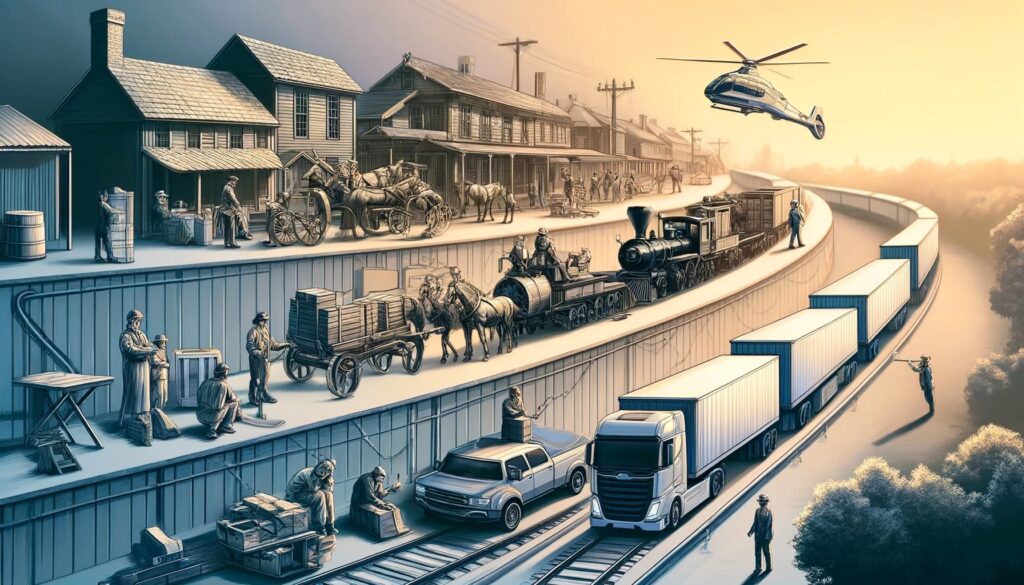
The Evolution of Drayage: From Past to Present
In the dynamic world of logistics and transportation, the concept of drayage has played a pivotal role in shaping the efficiency of cargo movement. Asset Based Intermodal, a frontrunner in the logistics and drayage industry, offers a unique lens into this evolution. From horse-drawn carts to advanced intermodal solutions, the journey of drayage reflects a remarkable transition mirroring technological and industrial advancements.
The Early Days of Drayage
Drayage, originating from the term “dray” – a low, flat-bed wagon without sides, pulled generally by horses – was once a simple yet vital component of logistics. In the late 18th and early 19th centuries, drays were used to transport goods short distances, typically within a town or to nearby shipping docks. This era of drayage was characterized by its labor-intensive nature, relying heavily on manual labor and animal power.
Transition to Rail and Motor Vehicles
The advent of the railroads in the 19th century marked a significant shift in drayage. Trains could transport goods over long distances, but drayage services remained essential for the ‘last mile’ – moving goods from rail yards to final destinations. The early 20th century saw another leap with the introduction of motor vehicles. Trucks, with their versatility and speed, revolutionized drayage, allowing for quicker turnaround times and the expansion of service areas.
The Intermodal Revolution
Post World War II, the world witnessed what can be termed the ‘Intermodal Revolution’. The concept of using different modes of transportation – rail, truck, and ship – in a single supply chain became increasingly popular. Asset Based Intermodal stands at the forefront of this revolution, integrating these modes seamlessly. Containers that could be easily transferred between ships, trucks, and trains, also known as intermodal containers, transformed drayage operations by significantly reducing cargo handling, thereby enhancing efficiency and reducing costs.
The Digital Era and Sustainable Practices
In recent decades, the drayage industry has been reshaped by digital technologies. Asset Based Intermodal leverages cutting-edge technology for route optimization, real-time tracking, and efficient fleet management. These advancements not only improve operational efficiency but also contribute to reducing the environmental footprint, aligning with the global push towards sustainable logistics.
The Future: Autonomous Vehicles and AI
Looking ahead, the horizon of drayage includes autonomous vehicles and AI-driven logistics solutions. These innovations promise to further optimize drayage operations, reducing human error and increasing efficiency. Asset Based Intermodal stays abreast of these developments, positioning itself to lead the charge in the future of drayage.
Conclusion
The journey from horse-drawn carts to AI and autonomous vehicles encapsulates the remarkable evolution of drayage. Asset Based Intermodal, with its deep roots and forward-looking approach, embodies this evolution, offering unparalleled expertise in the logistics and transportation industry. By understanding the past and embracing the future, Asset Based Intermodal continues to drive innovation and efficiency in the world of drayage.
—
This historical perspective underlines Asset Based Intermodal’s extensive knowledge and experience in the logistics and drayage sector, highlighting its capability to adapt and lead in an ever-evolving industry.

